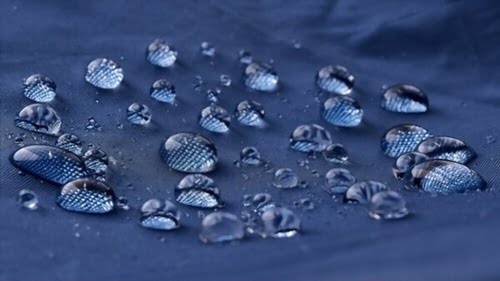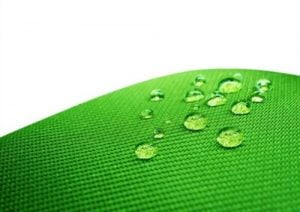Went outdoors in the summer and unfortunately, your cushions, bedsheets, or tents got wet in bad weather.
For this bad experience, you are thinking of making the fabrics waterproof. Then you don’t have to buy new waterproof fabric to go outdoors. You can waterproof your used fabrics in a few excellent ways.
Today I will show you some of the great ways to how to make fabric waterproof. Apply the processes and make your favorite fabrics waterproof.
HOW TO WATERPROOF FABRIC
We have come up here with 3 effective methods of waterproofing fabric. Read all the Methods below to know how to waterproof fabric easily.
METHOD- 1: USING WATERPROOF SPRAY AND SEAM SEALER
Waterproof the fabric by applying waterproof spray and seam sealer. The easiest and most reliable way to waterproof a fabric is to apply a waterproof spray and seam sealer.
To perform the waterproofing activity you should choose a spray that will give UV resistant protection to the fabric. As a result, keeping the fabric out will prevent it from fading.
You can get waterproof spray on sealers from various outdoor stores or hardware.
Note: Spray sealers can be quite intense for you if you have sensitive skin. So use goggles, gloves, and a mask for protection.
- Choose a place:
If you want to do this process outside, dry and windless days will definitely be better for you. Because dry weather avoids moisture which can affect the spray on the sealer.
- Clean the fabric:
If the fabric has stubborn heavy dirt, you must clean it thoroughly with a detergent. However, if there is light dust, it does not need to be washed in water, in this case, remove the dirt using a brush or vacuum.
- Dry the fabric:
Applying a spray sealer will stick to the fabric, so make sure the fabric dries well. Choose a location that has good ventilation. But if you want to do the process at home, open the doors and windows.
- Apply spray to fabric:
Your fabric is now ready to spray. Take your waterproof spray and place it 5-7 inches away from the fabric and apply lightly. Make sure each layer is evenly coated.
- Dry the fabric and spray again:
In this step, the sprayed fabric will dry out. It takes at least 4-5 hours to dry well. Once dry, apply another coat of spray again. This will make your fabric better waterproof.
- Apply sealer to the seams:
After spraying the fabric, apply sealers to make the seams waterproof and durable. You will find the applicator in the sealer bottles, gently press on it and roll the sealer.
METHOD- 2: USING LAUNDRY DETERGENT AND ALUM
This process will give you great results quickly and with little effort. The fabric waterproofing process with detergent and alum is very simple. Alum helps other molecules to bond easily and permanently.
- Mix Laundry detergent and water:
Take a big pot. Mix detergent with hot water in a container (1 pound detergent with 2 gallons of water). Now, mix the amount of water and detergent according to your fabric. However, it is better to mix more to immerse the fabric well.
- Dip the fabric in the detergent mixture:
Soak the fabrics well in detergent water, and make sure that each fabric is submerged in detergent water. If the fabrics are floating on top of the mixture, you can weigh them with something heavy and dip them. Soak the fabric until completely saturated
- Dry the fabric:
At this stage, take the fabrics from the detergent mixture and dry them well. Make sure that the wet fabric does not fold, as this can cause both sides to stick together. Stretch the string with two poles and clip the fabric into it.
- Make a mixture of water and alum:
Mix alum in hot water (if it is 3 gallons of water, you will need 1/2 pound of alum. Stir the mixture so that the alum is well dissolved.) When the fabrics are well dried, soak the fabrics in the mixture for 2 hours.
Make sure that the fabric is completely immersed in the mixture. However, if the fabric floats to the top, weigh it with something heavy and dip it.
- Dry the fabric:
Dry the fabric in the sun in the string as before. And make sure it doesn’t fold.
METHOD- 3: USING TURPENTINE AND SOYBEAN OIL
- Clean and dry the fabric:
The fabric must be cleaned well. In that case, you can clean it with a good quality fabric cleaner. But if there is light dust, clean it with a brush or vacuum.
After washing in water, dry it completely because later you will work with oil and turpentine, in which case, if the fabric is wet then the ingredients, will not stay on the fabric.
- Place the fabric in a specific place:
Perform the process in a place where there is adequate ventilation. Because turpentine is very intense.
Make a mixture of soybean oil and turpentine.
Take a hard plastic container and mix coconut oil and turpentine in it. (Add 4 ounces of turpentine to 1 cup of coconut oil in this ratio). Now stir the mixture well with a stick or brush.
- Spread the fabric on a flat surface :
However, you can spread a plastic tablecloth so that there are no stains on the surface.
- Apply the mixture to the fabric:
Take a wide flat brush and dip it into the mixture. Now coat the mixture well on the fabric with a brush, try to overlap. You can use a spray bottle instead of a brush to coat the mixture.
- Dry the fabric:
Make sure your fabric blend is well coated. Now let it dry. It will take a few hours to dry.




![Read more about the article Top 6 Best Printer For Avery labels In 2024 [Updated]](https://theconsumertips.com/wp-content/uploads/2021/02/Best-Printer-For-Avery-labels-300x144.jpg)
